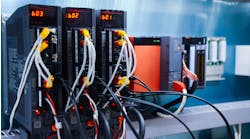At the 2020 ARC Industry Forum in Orlando, four industry specialists spoke on how technology can automate operating procedures used in manufacturing facilities. Industrial procedures in their various forms have existed since the dawn of the second industrial revolution. With the emergence of Industry 4.0, new digital solutions have become available that can enable a new paradigm between automation and manually executed operating procedures. The speakers in this session related their experiences in exploring new technological options to work instructions relative to existing process automation infrastructure. The session helped attendees reflect on why operators fail to follow written operating instructions, how automation can help eliminate human-factors errors, and where Industry 4.0 solutions may enable cost effective alternatives to traditional automation solutions.
Readers can view videos of these and other 2020 ARC Industry Forum presentations by clicking here.
The Problem Is Real And The Solution Available
ARC Associate Mike Williams opened the session with a short journey through the different industrial revolutions that tied into his own history, including his own long previous tenure at the Dow Chemical Company. In doing so, he walked the audience through how industrial procedures were passed on mostly through on-the-job training, verbally, and through written instructions. Toward the end of the journey he stated, “We still have a disconnect between manual procedures and full automation. There's still a lot of [manual] activity out there. If you look at a P&IDs, roughly 35 percent of valves have some level of automation. Well, what's the rest of those valves for, or those motors out there? They’re for startup, shutdown, maintenance and non-continuous activities that happen sometimes on a routine basis, like cleaning in place. Cleaning the screens on the suction side of a pump is a good example of something that happens routinely. So, I'm asking myself this fundamental question: ‘Will the Industry 4.0 solutions for digital work instruction become the next breakthrough for human-machine performance?’”
Hard Copies No Longer Legitimate
According to Williams, there are over two dozen potential solutions for digital transformation of industrial procedures, from something as simple as Microsoft Word to much more advanced, purpose-built procedural engines. He pondered, “With all the technology that's available out there, with all of the operating discipline, behavioral modification type solutions to invoke on our operations staff, why are they not following procedures?"
According to Williams, there are three stages of a procedure. First, it needs to be authored and the content needs to be accurate and version controlled so it can be disbursed properly. Second, the procedure needs to be portable. Books on the shelf are no longer legitimate. A lot of procedures are documents sitting somewhere else on a shelf that the operator does not use. The third item is the asynchronous behavior between executing a procedure manually and all the automation that's happening around that behavior.
Williams then walked through the findings of an accident that occurred at a Dow facility in Texas City, Texas, involving cleaning a pump screen. This was done every shift. In reviewing the events, they found asynchronous behavior between the execution of that procedure and an advanced control system running around it. The worker was exposed and unfortunately, he died. There is technology available both from the Third and Fourth Industrial Revolutions. By combining knowledge and the available technology, end users can get an integrated solution that provides a higher level of reliability of human performance. To solve this problem, manufacturers have to understand what the defects are; why are operators not using procedures; and how to ensure that the procedure is executed properly.” Williams stated, “You got to define it before you can digitize. It's not simply taking a Microsoft Word document and putting it on a mobile device. That's not digitization, that's just electronic transfer and display.”
The third thing needed is the ability to translate it or digitize it such that it runs in the real-time world. And finally, the solution must provide integration between the automation in place to ensure that manual activities are synchronized with the automated activities.
Safety and Regulatory Compliance
Next, Sandy Currie, retired from Dow Chemicals, focused his discussion around the safety and regulatory compliance aspects of procedural automation. He stated that, ultimately, it gets wrapped up in financial justification. “If you can improve throughput, that's easy to justify, but how do you justify the minimization of risks? The probability that something might go wrong. That's something where these automated manual procedures can have a significant impact, but it's much harder to quantify financially.
One of the many challenges with procedures is that they are written in a way that assumes everything happens normally, something Currie called the “happy path,” instead of leading the operator through what happens if something doesn't work properly. When specifying batch plant operations, more than 50 percent of the work is describing what to do when something breaks. “Most written procedures do not go into that detail. So, replacing a written procedure from a clipboard to an electronic procedure on glass doesn't solve the problem. You have to completely rewrite how you write your procedures, what the procedure contains, and give the operator information on what to do if he encounters a problem in that procedure. It takes a lot more work, but it is much, much more effective.” This means that the procedures must be adaptable and software solutions allow for real-time flexibility. Information, data flows, and actions are the ideal way to define procedural actions.
Interconnectivity is also required. Personnel are going to access reference tables, LIMS results, quality data, DCS values, etc. Taking paper into the field, writing down observations, and returning to the control room will not work. Connectivity must be a requirement for a workflow engine. If somebody waits for a phone call about an issue and then, finally, goes out to lunch and comes back a half hour later, he may have lost half an hour or more of time. In some cases, that's thousands of dollars of lost asset utilization.
Currie summarized his presentation by stating that procedures are everywhere. “If you have a DCS, and you make material sold for thousands of dollars a liter, but you have significant manual operations executed off static or printed procedures, you need to rethink your operations.”
Linde Shares Its Procedural Automation Experience
Jesus Flores-Cerillo, associate director of digital technologies, and Gangshi Hu, development professional, presented Linde’s experience implementing procedural automation. Flores-Cerillo began with an introduction to Linde as a major global supplier of industrial and other gas products and then described three main methods of distribution. One is the production of facilities to serve its customers, or “onsite” distribution. We have big plants serving Shell, Dow, etc. A second method is merchant distribution. In North America, Linde has more than 1,000 trucks. Third is the packaged gas business. In North America alone, Linde has more than 10 million cylinders. In every one of these types of operations and in every facility, there are hundreds of standard operating procedures. While some are more critical than others, all the procedures were paper based.
Flores-Cerillo stated that this presented several challenges. These include the fact that offline operating procedures made procedural data unavailable to analytics and difficult to act upon. It also meant that there was no rigid authentication and/or version control. Field personnel could not easily access information while in the field. There was no integration of operator actions with real-time information in the process control systems. Linde also identified three perceived opportunities: unique operations, maintenance preparation, and complex operator rounds.
Flores-Cerillo shared that Linde expected several benefits from implementing digitalized procedural automation and he grouped them into operational, engineering, and EH&S (environmental, health, and safety.) Operational benefits were version control and validation, reduced variability, globally leveraging best practices, improved handling of abnormal situations, improved efficiency, and universal accessibility. Engineering could expect reduced code development, reduced installed costs, validated solutions based on best practices, and consistent and faster implementation. From an EH&S standpoint, Linde expected safer operations, more informed staff, improved compliance reporting, better documentation, and better visibility within the organization.
Flores-Cerillo said, “We are not saying these will be everything, but there are components that certainly will be very beneficial. Certainly, one of the features that we are leveraging, is the fact that during a process operation you can have these types of procedures interacting very closely with the control system, and don't allow the control system to move on unless certain variables are achieved. That is something critical."
Linde chose an on-premises installation of NovaTech’s Augmented Manual Procedures (AMP) due to its functionality and DCS-agnostic characteristics. A representative from that company then reviewed the different roles involved with setting up the solution, stressing the necessity of cooperation between the IT and OT groups. Using the team approach allows buy-in and allows the utilization of the right expertise.
There are also two types of procedures to consider. The first type, “universal or standard” procedures are usually relatively simple and change little over time. These could be equipment inspections, for example. The second are location-specific procedures that contain instructions specific to the site, are usually complicated, and updated more frequently. Linde chose a different approach for each. The strategy for the standard procedures were to centrally manage them, driving for consistency and to use the data for analytics. The strategy for the site-specific procedures required engagement of site personnel, striving for a comprehensive instruction, and using data for both reports and analytics.
Linde expects to use the pilot site for training, then have the plant start utilizing the procedures. The low-frequency, high-complexity procedures will be addressed next, followed by using the data collected to gain insights and look for opportunities to improve. We learned that leadership buy-in is critical to success as is a reasonable estimate of the work involved.
Industry Slow to Adopt Best Practices
Although procedural automation techniques are well established and the benefits well documented, the industry has been slow in adopting these best practices. Even large corporations only have pockets where procedural automation has been implemented well. Newer technologies like wearables, augmented reality, and data analytics offer end users the opportunity to improve what is already in place. The biggest challenges end users face are the lack of personnel to implement and optimize, a lack of capital to invest, and a lack of focus.
ARC has conducted extensive research into the various approaches for solving this pressing issue, which include both enterprise-wide solutions and plant floor applications.
Mark Sen Gupta, Research Director, leads ARC’s coverage of process automation and automation supplier services. He also covers topics in process safety and SCADA. Mark has nearly 30 years of expertise in process control, alarm management, SCADA, and IT applications. He holds a Bachelors of Electrical Engineering and a Masters of Science in Electrical Engineering from Georgia Institute of Technology. You can email him at [email protected].


